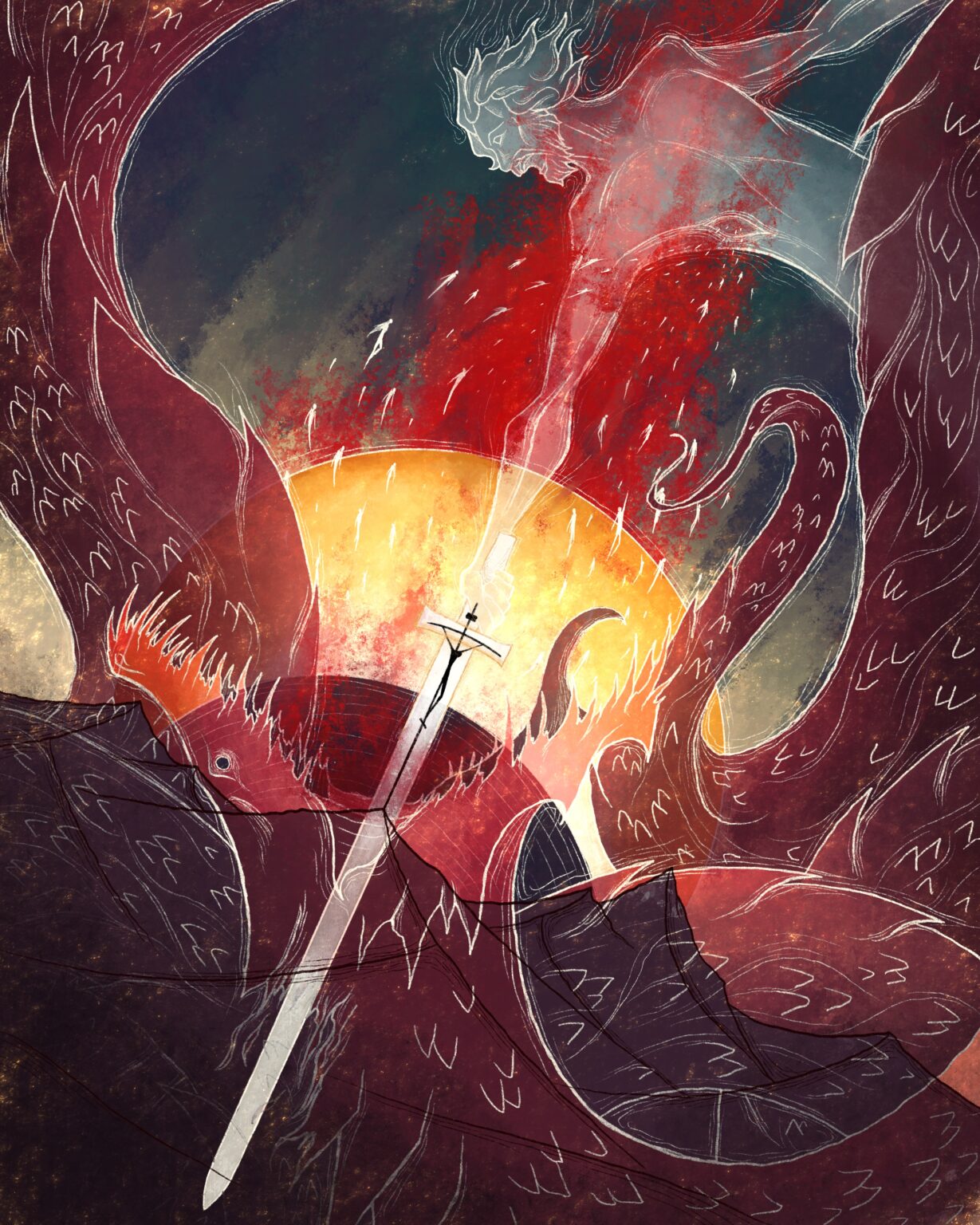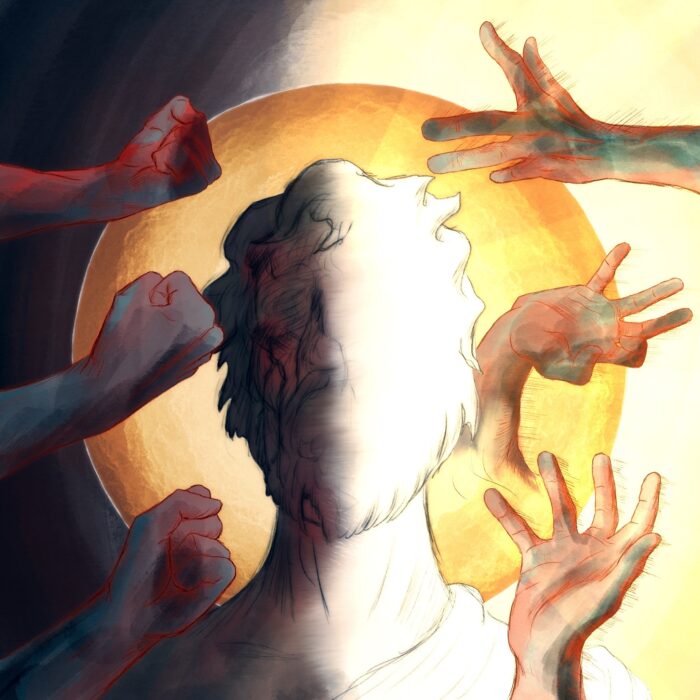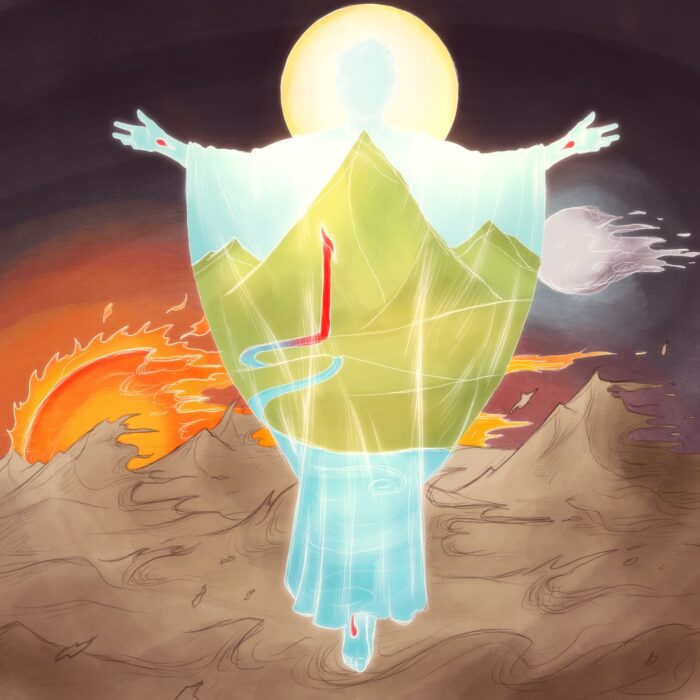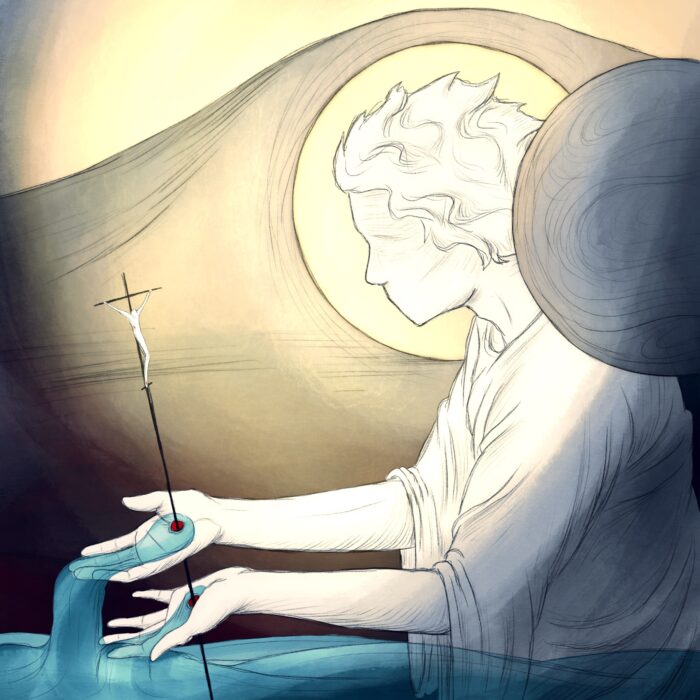Isaiah 42:13, “YHWH goes out like a mighty man, like a man of war He stirs up His zeal; He cries out, He should aloud, He shows Himself mighty against His foes.”
With the zealous fury of a warrior in the heat of battle, YHWH will descend upon His foes, shatter the earth (42:15), and gather His people to Himself (42:16, 43:6-7). In this way, Isaiah calls his readers to see (and feel) YHWH as passionately engaged in the work of redemption.
For YHWH, the eschatological salvation of His people is not an indifferent command delivered stoically from a crystal throne, it is a battle cry roared through the blood and tumult of war. His radical engagement in His people’s final healing is perhaps even more clear—and more shocking—in v.14, where YHWH likens His salvific work to a woman in labor, crying out in the agonies of giving birth. Let there be no mistake, when YHWH works to save His own, His entire self is poured—blazing like molten iron—into the work.
And where do we see this zeal displayed? Where does YHWH cry out in the earth-splitting labor pains of redemption? Where does He roar in the foe-crushing zeal of the divine warrior?
In Isaiah, these acts of God’s passion result in the final salvation of His people, specifically, in the in-gathering of the scattered children of God (43:6-7), the provision of living waters (43:19-21), the forgiveness of sins (43:25), and the gift of His Spirit (44:3). In the New Testament, these same realities are secured through the cross: in-gathering, Jn 11:51-52; living waters, Jn 7:37-39, 19:34; forgiveness, Matt. 26:28; the Spirit, Jn 19:30, 34, Rev.22:1.
In other words—according to the inspired interpretation of the New Testament—the divine warrior shows Himself mighty against His foes from the heights of Calvary and the roar of His almighty zeal echoes in the cry of Christ from the cross.
This—this Man, hanging stripped and bloodied on a hill outside Jerusalem, crowned with the curse of Eden, His muscles screaming at the limits of their strength, His veins splitting under the damning pressure of humanity’s sin, His heart run through by the spear point of our death, His flesh torn, His blood spilled—This is the Divine Warrior; this is YHWH roaring in conquest over His foes; this is the Lord of Glory, trampling Leviathan beneath His love-pierced feet, crying out as He brings the New Creation to birth, gathering His Bride to Himself for eternity.
In today’s picture, I’ve presented the moment of Jesus’ (resurrection-illumined) death as the victory of YHWH over His foe and the eschatological ingathering of His people. The cross becomes the sword of the Lord by which He pierces the Leviathan (Is.27:1, “In that day, YHWH will punish with His sword…Leviathan the twisting serpent…He will slay the dragon that is in the sea”), thus fulfilling the ‘protoevangelium’ of Genesis 3:15.
The opening tomb silhouettes the cross, alluding to the certainty of Easter morning and visualizing the apostolic principle that Jesus’ crucifixion appears in truth only as interpreted in light of the resurrection.
From the opened tomb (opened only through death) the redeemed people of God stream out of the grave (the grave of exile, the grave of spiritual death, and the grave of physical death) and are gathered into the torn side of the risen Christ. He Himself is the Homeland of His people, the New Creation into which they are gathered and in whom is all their joy for the endless ages to come.




